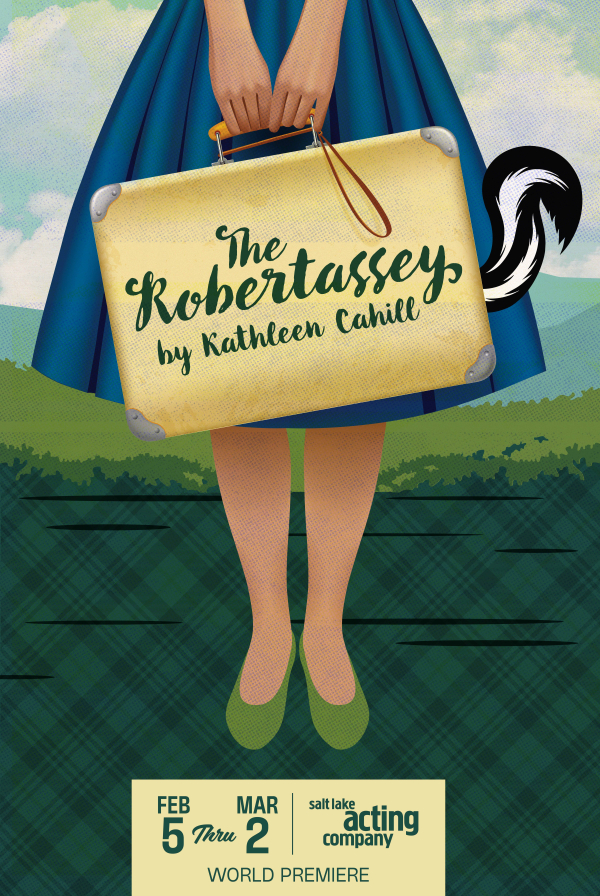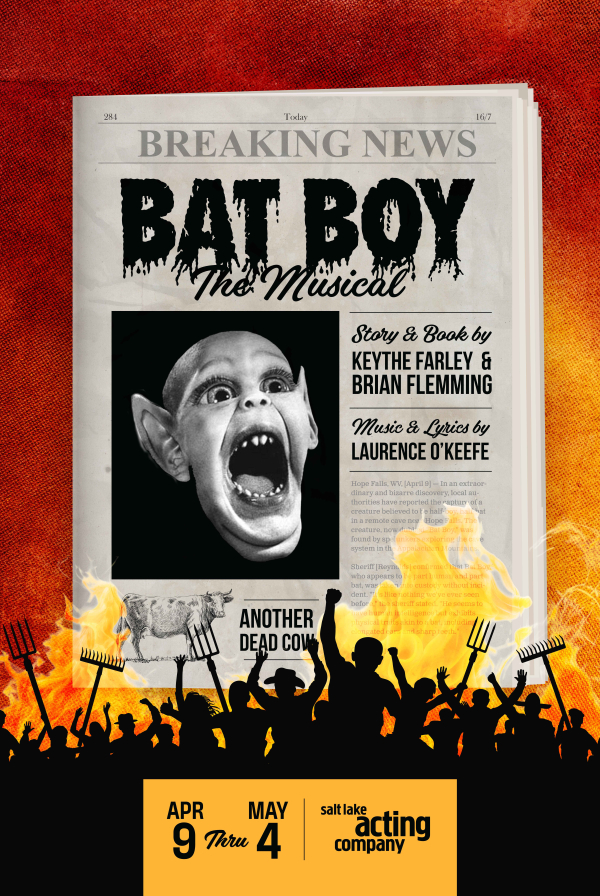Powerful Salt Lake production of ‘Harbur Gate’ showcases Iraq veterans’ stories
By Barbara M. Bannon Special to The Tribune
February 15, 2017
The most profound and powerful thing about Utah playwright Kathleen Cahill's "Harbur Gate," making its world premiere at Salt Lake Acting Company, is how deceptively simple it seems. The structure and dialogue of its three interlocked plays couldn't be more straightforward; each one depicts a man and a woman involved in a pared-down, uncluttered situation.
Yet what we get is so much more than what we see. At the same time the plays chronicle gender discrimination and sexual abuse in the military — without ever becoming manipulative or preachy — they put us in touch with the shattering experience of going to war in Iraq. The plays work on a multitude of levels: natural and supernatural, literal and metaphorical, realistic and surreal, spiritual and visceral. It is like shaking a children's toy box and having a brightly colored dragon burst out.
In the first play, "Orpheus," two Army medics, Chad (Matthew Sincell) and Carey (Natalia Noble), are about to get Purple Hearts for valor in combat. Orpheus, you may remember, is the character from Greek mythology who went to hell and came back. Carey lost her best friend to an IED explosion and is mired in grief and guilt; Noble adeptly juggles her chaotic mix of confusion and despair. Sincell's unabashedly gay Chad — "I'm showing the world who I am and where I've been," he announces — is flamboyant and funny as he tries to get her to pull herself together with the play's underlying message: "If you just keep looking back, you will never be able to go forward. You've got to go forward; that's what being alive is about."
Alyson Moss (Cassandra Stokes-Wylie) and Vincent Russo (Topher Rasmussen) are driving in a convoy truck in "Harbur Gate," the second, most compelling play. The two are arguing about the place of women in the military — "men are men, and women are not," Russo maintains — when an incident — the one that unifies the three plays — occurs. "Harbur Gate" beautifully balances real and surreal, and Rasmussen and Stokes-Wylie make a seamless transition between prickly animosity and the compassionate moments that unite them at the play's end, where they become like mother and child.
The third play, "Veteran in a New Field," is the most metaphorical, counterpointing images of blindness and seeing. Michelle (Ariana Broumas Farber) is a veteran with PTSD who "see[s] things that aren't there," while John (Lane Richins), a blind painter, has exchanged sight for insight. The title comes from a Winslow Homer painting John uses for inspiration, but both characters are veterans in a new field. John comforts Michelle with the observation, "Sometimes … you get to begin again. … You get to live … on a whole different level. … You exist in your own contradiction. … The pain allows you to heal." Farber vacillates effectively from agitation and bitterness to pride and understanding, and Richins is philosophical without getting heavy-handed.
Tamilla Woodard's direction is tight but sensitive to the emotional arcs of "Harbur Gate," and she has choreographed military interludes to connect the plays. Shannon Roberts' set is stark and functional; its gray metal benches convert to a sofa, and the floor is covered with sand; these characters can't escape the desert. Jesse Portillo's evocative, constantly shifting lighting features a scrim that can look like an explosion or a metal sheet. Erin West's character-defining costumes and Jennifer Jackson's original music sharply define place and time.
The voices of the many veterans Cahill interviewed shine through these plays like lights in the darkness, but they interweave and connect in a patchwork of the human condition that is all her own. This play, Cahill's most accomplished to date, is indelible testimony to their resilience and diversity.














